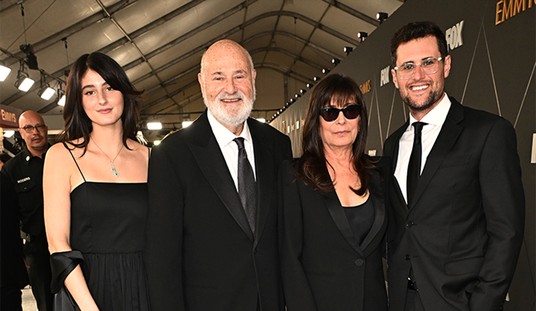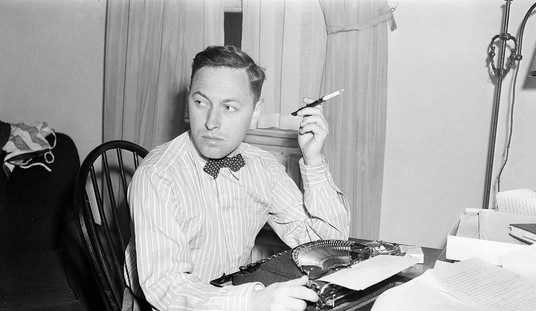Night crouches over the lake. Ragged clouds drag across a swollen moon; wind thrashes the trees until they moan. The water below breaks into a lattice of silver and shadow, waves hammering the empty shore.
In the lone beach house, a girl waits. It is off-season; no one lives here now. She knows she has been chosen. The air tastes of rain and danger, and her breath quickens. Wind tangles her hair and pulls at the hem of her dress as she stands in the doorway, listening.
Somewhere beyond the treeline, a howl cuts the storm. He is near. Her heart stumbles, fear and yearning tangled so tightly she can no longer tell them apart.
Order Hidden in Chaos
The scene feels wild, but its wildness isn’t random. The girl, the storm, the moon, everything follows a pattern older than language. We sense it without being told: a ritual is underway, a law obeyed. The danger draws us in because it promises structure, the untamed meeting its appointed hour.
This is the secret pulse of the modern werewolf story. It isn’t chaos that calls to us but order inside chaos: instinct shaped by covenant, freedom defined by boundary. Beneath all the moonlit violence runs an intuition older than ideology: that wildness is only beautiful when it keeps its form.
Sacred Transformation to Cursed Dividedness
Long before the werewolf stalked European forests, humanity had been drawing half-human, half-animal figures on cave walls. In the Paleolithic caverns of Trois-Frères and Lascaux, antlered or horned “sorcerers” dance among the beasts, a shaman’s vision of harmony between man and nature. To wear an animal’s shape was once an act of reverence, a bridge between the living world and the divine.
As civilizations rose, that ritual empathy became theology. Egypt’s gods wore animal heads; Mesopotamian epics like Gilgamesh set wild man and city man as necessary halves of one story. But the Greeks added moral weight. In the tale of Lycaon, Zeus punished impiety by turning a man into a wolf. Christianity inherited that symbolism: in the Middle Ages, the werewolf stood for fallen nature, man’s surrender to appetite.
Medieval Europe fused these fears with its own local shapeshifters: the Norse berserker clad in bear-skin, the Celtic man-wolf cursed by Saint Patrick, the Slavic volkodlak, even the Navajo skinwalker and the Aztec jaguar warrior, as reported by missionaries. Everywhere the pattern held: the beast-man was dangerous because he blurred divine order. To become a wolf was to step outside God’s image and into chaos.
Then came the modern mind. As faith waned and psychology rose, the monster turned inward. The Romantic and Victorian imaginations remade the werewolf into a mirror of the divided self. Sabine Baring-Gould’s The Book of Were-Wolves (1865) collected folk accounts but read them as metaphors for mania and guilt. Stevenson’s Dr. Jekyll and Mr. Hyde (1886) gave the duality a laboratory; H. G. Wells’s The Island of Doctor Moreau (1896) extended it into evolution and ethics. Later writers such as Guy Endore in The Werewolf of Paris (1933) and the filmmakers of The Wolf Man (1941) fixed the modern image: a soul torn between civility and instinct, craving wholeness but trapped in cyclical transformation.
By the twentieth century, the wolf was no longer evil but estranged, an aspect of humanity in need of integration rather than exorcism. That shift, from punishment to psychology, sets the stage for the contemporary werewolf romance.
The Laws of the Wild
Modern women do not turn to werewolf stories because they long for savagery. They turn to them because savagery, in these tales, finally has rules. The full moon rises on schedule; the transformation obeys its cycles; the bond between mates is binding. In a world that exalts freedom but delivers disarray, the werewolf’s curse becomes a strange kind of grace.
It reminds the reader that passion without boundary devours itself, that strength becomes beauty only when it consents to law. The heroine may tremble on the threshold of the wild, but she crosses it not to lose herself but to find a structure strong enough to hold her whole.
Feminism's Illusion of Limitless Freedom
Feminism promised liberation through limitlessness. It told women that to be whole, they must shed every inherited boundary: modesty, dependence, duty, even the desire for protection. The result was not freedom but exhaustion. A life without walls offers no shelter.
Many women discovered that the constant performance of autonomy felt less like empowerment and more like exile: desired by everyone, possessed by no one, accountable to nothing and therefore to everything.
The werewolf myth reverses that logic. It says that limits are not cages but scaffolding, the framework that lets the living body move. The laws of the moon, the loyalty of the pack, and the binding of the mate are not shackles but shape. The wild becomes sacred not by being unleashed but by being governed.
Werewolf stories are not about bestiality, and despite the heat of their covers, they are not truly about sex. They are about women seeking something natural to femininity that the modern world has taught them to distrust.
Under the fur and the moonlight, what these stories long for is not the animal but the reconciled creature, instinct and reason moving in harmony, passion serving purpose. The heroine isn’t yearning for a beast; she’s yearning for wholeness.
Feminism taught women to distrust men, to see dependence as danger and devotion as weakness. The werewolf story makes it safe again to depend, to imagine strength that protects instead of preys. She wants to feel safe in her own vulnerability again, to surrender without annihilation, to love without being consumed. The werewolf’s devotion — his fierce protectiveness, his unbreakable loyalty — becomes the mirror in which she rediscovers her own nature: not predator, not prey, but the keeper of the hearth, the chooser of covenant.
The Void Feminism Left Behind
The myth speaks to a hunger modern ideology cannot name. For half a century, feminism has urged women to imitate the masculine pattern of freedom—autonomy without relationship, power without dependence, achievement without sacrifice.
In doing so, it quietly dismantled what older generations called the family trinity: father, mother, and child bound in mutual duty. The old sources of security — husband, kin, faith — were traded for the distant promise of bureaucratic care.
The exchange left a void. It stripped away the everyday grammar of belonging that once told a woman who she was and what her strength was for. The contemporary werewolf story steps into that emptiness. It restores, through fantasy, the pattern that ideology erased: loyalty instead of license, fidelity instead of self-gratification, the wild made meaningful through love.
The heroine’s surrender is not submission to a man but reunion with her own created order, the rediscovery that protection and devotion are not prisons but proofs of value.
Eden Remembered
In the language of faith, what the werewolf myth gropes toward is the recovery of Edenic balance. Woman was not made to rival man or to rule over him, but to complete the world with him, the final act of creation that brought harmony between the human and the living earth.
Her calling was always to guard life, to civilize strength without diminishing it, to join the wild pulse of nature to the moral pulse of love. When that vocation was blurred, both sexes lost their bearings.
Yet even through secular myth, the design still echoes. The heroine who tames the wolf does not chain him; she brings him back into right relation with himself and with her. Through her, the untamed finds meaning, and creation remembers its order.
The Mistress of Beasts
Beneath this modern veneer of romance lies something far older: the Mistress of Beasts, that ancient figure carved on Minoan seals and painted on Mycenaean vases. She stands between the human and the animal realms, arms outstretched, mastering the creatures that once terrified mankind.
She is not their captor but their governor, the emblem of woman as mediator between chaos and form, nature and order. In her presence, wildness bends without breaking. The lion crouches, the serpent coils, the wolf submits. She embodies the paradox of the feminine: gentle enough to soothe the wild, strong enough to command it.
Modern werewolf fiction, though clothed in contemporary language, revives this same archetype. The heroine does not lust after the beast; she reclaims her place as its equal and its ruler. These stories are not about indulgence in animal passion but about the restoration of hierarchy within creation: the re-enthronement of woman as the moral axis through which instinct is sanctified.
The Wild Made Holy
Outside, the storm still howls. The moon still pulls at the tides and at the blood. But inside the circle of story, chaos bows to form. The girl in the doorway was never waiting for a monster; she was waiting for meaning.
The werewolf came not to devour her but to remind her of the laws that make love possible, the boundaries that tame the wildness. That is why the werewolf endures when other monsters fade. Beneath the fangs and the moonlight, it is a parable of covenant in an age of appetite, of belonging in an age of isolation.
It re-enchants hierarchy, law, and fidelity, the very things the modern world tried to forget, and shows them once again as instruments of freedom. Through this strange, ancient creature, women remember what the culture denied: that wildness itself becomes holy when it keeps the shape of order.
The Company of Monsters
This essay is part of a larger meditation on what our monsters reveal about us. Each creature tells the same story from a different angle. The vampire, in Immortality Without Judgment: How the Vampire Seduced the Modern World, wrestles with the human longing to escape death and morality alike. The monster hunter, in The Monster Hunter: The Line Between Civilization and Chaos, stands for those few who still defend the sacred against the corrupt. The werewolf completes their trinity: a parable of wildness redeemed, instinct restored to order. Tomorrow, I will explore what happens when the monster hunter himself is corrupted.









